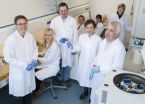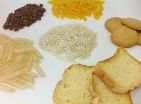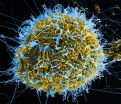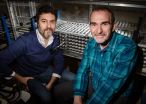(Press-News.org) Research to be published in the International Journal of Web-Based Communities suggests that the familiar interfaces of online social networking sites might be adapted to allow us to interact more efficiently with our networked devices such as cars, domestic appliances and gadgets. The concept would also extend to the idea of those devices connecting with each other as necessary to improve efficiency of heating and lighting, make our home entertainment systems smarter and much more.
Are you Facebook friends with your microwave oven, is your car? Does your washing machine have a blog read by the tumble drier? Ever thought of following your lighting circuit on Twitter, would it make sense to have the electric curtain controllers do so? Well, such whimsical ideas are perhaps a little far-fetched at first glance. There are some precedents. One might follow a movie and TV streaming site on Twitter and use a connection tool to automatically control what output you record for later viewing on the TV but only if a web review site you also follow gives it a five-star review perhaps. You might even have a link between the items you flag as good or bad that then filter into Facebook updates, as many people do with the music they listen to on Spotify. The combinations seem limitless.
More mundane applications involving the lighting and heating in your home exist that allow you to have the thermostat switch on the heating before you come home either when you send it a text but also perhaps when a weather update from twitter forecasts snow. The Internet of Things is with us already as more and more domestic and other devices are hooked up to the internet and so their sensors and readouts become accessible via a web browser or to other software and apps on your smart phone become the norm for controlling a wide range of gadgets.
The next step is the development of a "social internet of things" that allows people and their gadgets to be more coherently connected. Writing in the International Journal of Web Based Communities, computer scientists Bruno Cabral, Cibele Vasconcelos and Cássio Prazeres of the Federal University of Bahia, in Brazil, recognize that we now use online social networks as a surrogate and as a supplement to many of the activities we once were able only to do offline without digital assistance. As the internet of things evolves, there is the potential to bring together this world and to use it to enhance and make more efficient our use of refrigerators, microwave ovens, TVs, cars, cell phones and other devices to improve quality of life.
Prazeres and colleagues suggest that in some circumstances and for many applications, the people will not even be needed, our gadgets will interact through the infrastructures of social networks without our input. One would hope, of course, that automatic thermostats listening to the weather forecast on twitter and checking up on your business trip schedule would not override the logic of not turning on the air conditioning in an empty house. Online tools such as IFTTT, which stands for "IF this, THEN that", allows users to connect web applications, their smart phone, online social networks and a range of cloud services and some networked devices, such as the aforementioned lighting and heating.
The team has taken this several steps further in developing an architecture for what they refer to as a "social web of things", which provides the potential means for us to interact with our devices in a naturalistic manner, not dissimilar to our online social networking interactions with people. This anthromorphizing of connected appliances gives us an instantly comprehensible interface, so that one might message the house thermometers to get the temperature and then tell the thermostats to switch on the heating on our command. But, the same architecture could then be extended to remove the intermediate, us, from the equation and so give us domestic bliss with minimal intervention on our part.
INFORMATION:
Cabral, B., Vasconcelos, C. and Prazeres, C.V.S. (2014) 'The social web of things: enabling the interaction of people and things on social networks', Int. J. Web-Based Communities, Vol. 10, No. 4, pp.426–444.
The social web of things
2014-10-16
ELSE PRESS RELEASES FROM THIS DATE:
Informative visit to the toilet
2014-10-16
Emily loves Justin - Stop global warming - Two more weeks till I graduate!: The exchange of information in public toilets is widespread. It also occurs in the world of white-footed sportive lemurs. Only instead of writing on the walls, they use scent-marks in order to communicate with their own kind. In a study published online in Springer's journal Behavioral Ecology and Sociobiology, Iris Dröscher and Peter Kappeler from the German Primate Center (DPZ) have found that the urine left on latrine trees serves as a method to maintain contact with family members. It also ...
Adenosine can melt 'love handles'
2014-10-16
The number of overweight persons is greatly increasing worldwide - and as a result is the risk of suffering a heart attack, stroke, diabetes or Alzheimer's disease. For this reason, many people dream of an efficient method for losing weight. An international team of researchers led by Professor Alexander Pfeifer from the University Hospital Bonn, have now come one step closer to this goal. The scientists discovered a new way to stimulate brown fat and thus burn energy from food: The body's own adenosine activates brown fat and "browns" white fat. The results are now being ...
Some rice-based foods for people with celiac disease contain relevant amounts of arsenic
2014-10-16
Rice is one of the few cereal grains consumed by people with celiac disease, as it does not contain gluten. However, it can have high concentrations of a toxic substance – arsenic – as revealed by the analyses of flour, cakes, bread, pasta and other foods made with rice, conducted by researchers from the Miguel Hernández University of Elche, Spain. The European Union is working to establish the maximum quantities of arsenic in these products.
Celiac disease affects almost 1% of the population of the western world, a group which cannot tolerate gluten ...
Pre-eclampsia may be caused by the fetus, not the placenta, says Anaesthesia editorial
2014-10-16
Pre-eclampsia, the potentially deadly condition that affects pregnant women, may be caused by problems meeting the oxygen demands of the growing fetus, according to an editorial in the November issue of Anaesthesia, the journal of the Association of Anaesthetists of Great Britain and Ireland (AAGBI).
The finding has promoted the co-author of the editorial, Associate Professor Alicia Dennis, Consultant Anaesthetist & Director of Anaesthesia Research at the Royal Women's Hospital in Melbourne, Australia, to call for the name of the condition to be changed to make women ...
Youth suicide: More early detection and better coordination are needed
2014-10-16
This news release is available in French. Although progress has been made in recent years, the matter of youth suicide in Quebec still needs to be more effectively addressed. In fact, a new study in the Canadian Journal of Psychiatry shows that more lives could be saved through early detection and increased public awareness and information sharing among professionals.
For this research, a team of scientists from the Douglas Mental Health University Institute and McGill University studied 67 suicide completers ages 25 and under and matched them with 56 living control ...
Ebola highlights disparity of disease burden in developed vs. developing countries
2014-10-16
A study recently published in the Journal of the American Academy of Dermatology shows that for Ebola, measles, syphilis and many other conditions with skin manifestations the mortality rates are hundreds of times higher in developing countries than they are in developed countries. The case of Ebola, the paper writes, "Highlights the importance of monitoring disease burden in the developing world even when the burden is low."
"Our goal is to provide information about trends and patterns to bring to light what's going on around the world so that funds can be allocated ...
Rivers flow differently over gravel beds, study finds
2014-10-16
CHAMPAIGN, Ill. — River beds, where flowing water meets silt, sand and gravel, are critical ecological zones. Yet how water flows in a river with a gravel bed is very different from the traditional model of a sandy river bed, according to a new study that compares their fluid dynamics.
The findings establish new parameters for river modeling that better represent reality, with implications for field researchers and water resource managers.
"The shallow zones where water in rivers interacts with the subsurface are critical environmentally, and how we have modeled ...
Oh brother! Having a sibling makes boys selfless
2014-10-16
A new study brings good news to all the brothers out there: Having a sibling is just as good for you as it is for your sister.
That's surprising to family scholars because boys typically report that they benefit less than girls from peer relationships.
"In our study, most relationships were not as important for boys as they were for girls," said study co-author Laura Padilla-Walker. "But the sibling relationship was different – they seemed to report relying on sibling affection just as much as girls do. It's an area where parents and therapists could really help ...
New catalyst could improve biofuels production
2014-10-16
PULLMAN, Wash. – Washington State University researchers have developed a new catalyst that could lead to making biofuels cheaply and more efficiently.
Led by Voiland Distinguished Professor Yong Wang, the researchers mixed inexpensive iron with a tiny amount of rare palladium to make the catalyst. Their work is featured on the cover of the October issue of the journal ACS Catalysis.
Removing oxygen for better fuel
Researchers, government leaders and industry leaders are interested in renewable biofuels as a way to reduce national dependence on fossil fuels and ...
Older adults satisfied with aging more likely to seek health screenings
2014-10-16
ANN ARBOR—Adults over 50 who feel comfortable about aging are more proactive in getting preventive health care services, a new University of Michigan study found.
Sometimes, the older population does not visit their doctor because they believe that physical and mental declines typify old age, says Eric Kim, a U-M doctoral student in clinical psychology. They think that lifestyle changes will not make a difference, making them less likely to seek preventive care. This is not true and also not a healthy mindset, he says.
Studies show that older adults can go down ...






